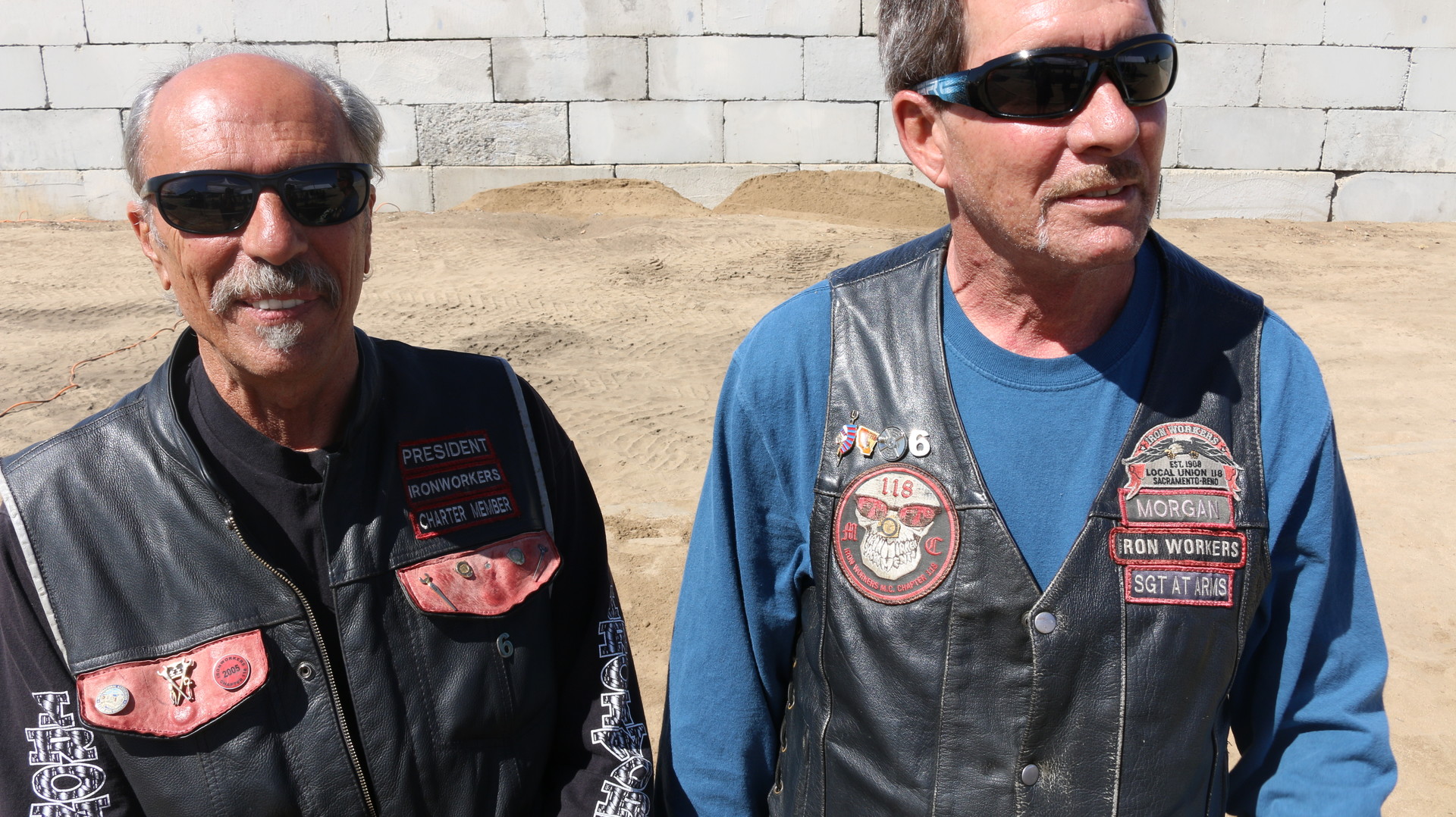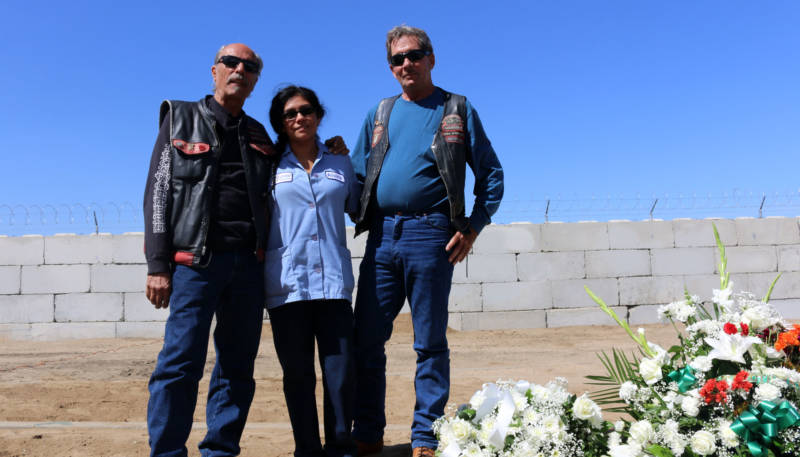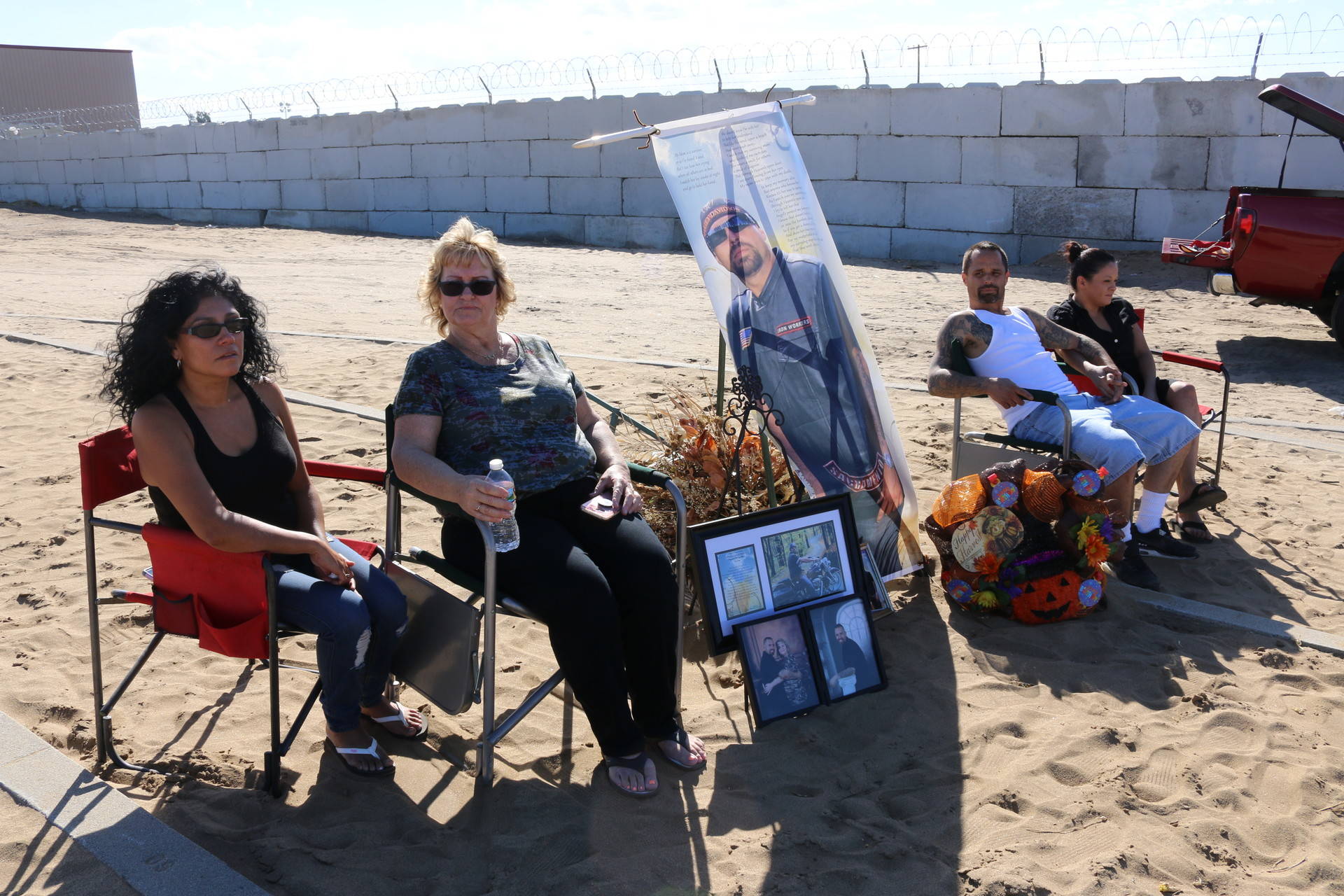O
n the west side of Fresno, there’s an empty lot near the train tracks where thousands of people are buried anonymously. There are no tombstones to mark the location of the graves, just strips of concrete with numbers stamped in them. It’s a potter’s field, a mass burial site for the remains of the abandoned and indigent.
Fresno County started burying people in mass graves in the late 1800s, when the city was founded. In September, the county sheriff’s office held a ceremony for nearly 800 people — the ones buried there most recently.
Underneath gazebos erected by sheriffs deputies, funeral attendees sat in plastic white chairs set up on a stretch of AstroTurf. Behind the podium were two coffins wedged into freshly turned soil holding small stacked boxes of cremated ashes.
One by one, leaders of different faiths came up to a podium framed by flowers. Though their specific words varied, each conveyed roughly the same message: "Everyone deserves a dignified burial."
Some of the attendees knew the deceased. They were friends or old coworkers. Others were simply members of the public who'd come to pay their respects.
Mike Simpson and Skip Morgan, both donning leather motorcycle vests and dark shades, said they'd come to remember a man named Raymond Mata, who took his own life nearly six years ago.
“Raymond was a young man with a lot of energy and a lot of thought for other people,” said Simpson.

Simpson is an iron worker, as was Mata. The two worked on tall buildings together, risking their lives side by side, and developed a close friendship. They also rode motorcycles together.
“A bunch of things kinda came down on him,” Simpson said of his friend. “[He was] unable to cope with it I guess, and we didn’t know his history in the past, that he had had situations like that.”
Whatever Raymond was battling, Simpson says, he kept it to himself. He was always laughing and making other people laugh.
“He was one of the happiest guys you’ve ever met. He’s not somebody you forget” added Morgan, also an iron worker.
“I think that’s what the whole point of living is, somebody remembers you, right?” Morgan said. “That you’ve made a good enough impression with other people that they remember you when you’re gone."
People can end up in a potter’s field — or common grave — for a variety of reasons. Some lose touch with loved ones, or are the oldest surviving member of their families. Others have families who can’t afford the hundreds of dollars it costs to collect ashes from the morgue.
But Mata wasn’t homeless. He had a job and a family. He was even planning to get married.

Leonard Pelagio, Mata's cousin, said he was loved. When they were kids, he taught Raymond how to break dance and took him to competitions.
“All of a sudden you come out with two little five-, six- or seven-year-olds doin’ head spins, like boom! Gotcha!" Pelagio recalled, laughing. "Every competition we were in, we took first place,”
The two kept in touch as adults, and Pelagio said he had started noticing some troubling signs, including indications that Mata had been hurting himself.
“I didn't know about it until I saw his neck,” Pelagio said. “When I visited him one time I was like, 'Hey what's that on your neck?' He’s like, 'Nothin'.' I’m like, 'Nothin'? Don’t give me that nothing.' You know, he promised he would never do it again and I told him to reach out to me.”
Shortly afterwards, Mata hung himself with an electrical cord. He was 34.
After his death, Mata's family had him cremated. But there was a huge fight over who had ownership of his remains, and members of his family stopped talking to each other.

